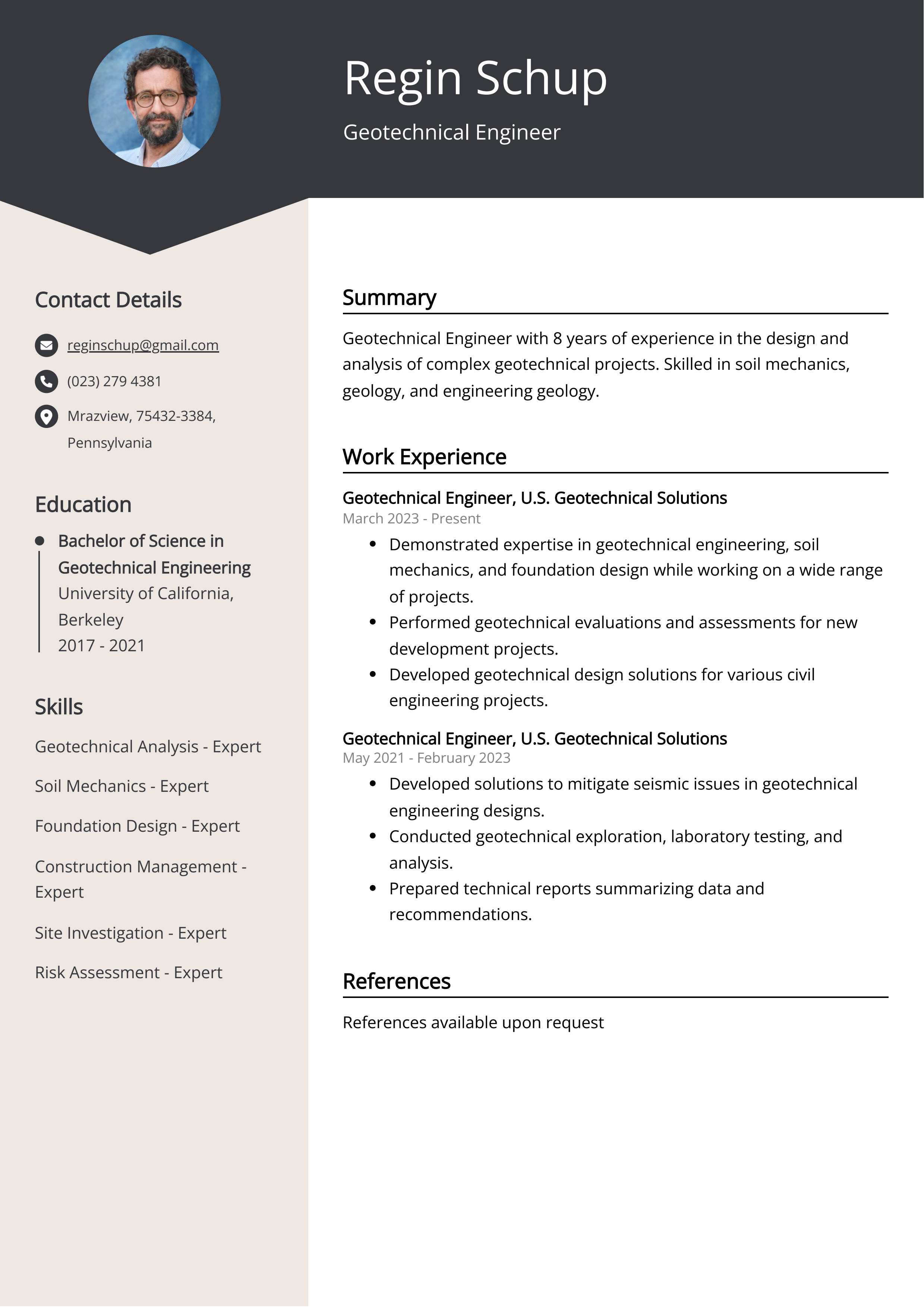Getting The Geotheta To Work
Getting The Geotheta To Work
Blog Article
What Does Geotheta Do?
Table of ContentsGeotheta Can Be Fun For AnyoneNot known Details About Geotheta An Unbiased View of GeothetaGeotheta for Beginners
They team up with civil engineers, structural designers, architects, and various other specialists to incorporate geotechnical factors to consider right into the general job style and building and construction procedure. This needs efficient team effort, sychronisation, and communication to guarantee that the geotechnical elements line up with the job objectives and satisfy regulative demands.Mining & Materials Design: Principles of exploration, penetration prices, and aspects impacting the option of drilling approach. Blowing up techniques in surface area and below ground functions. Mechanical and constant techniques to fragmentation, consisting of longwall shearing and fullface boring.
Integrated evaluation of fragmentation and comminution operations. Used by: Mining & Products Engineering.
The Best Guide To Geotheta
Bachelor's level programs in civil, geotechnical, geological, and ecological design normally last 4 years and consist of basic education programs in English, social science, and the liberal arts, along with courses in advanced mathematics, structural geology, and fluid mineralogy. (https://fliphtml5.com/homepage/bdjcx/geotheta/)
Geotechnical engineering includes the analysis of the dirt and rock conditions at a specific website, and their effects for the development of that site. As the majority of frameworks count on the ground for assistance, it lacks shock that a detailed understanding of the ground conditions, and the viability of structure systems, are vital to the long-lasting stability and efficiency of the structure or framework.
Being experts in the investigation of geological formations and ground behavior, geotechnical engineers perform scientific investigations and screening to recognize the impact these geological formations might carry the style and building and construction of structure, civil and infrastructure projects. This expertise is essential for the style and building of buildings, roadways, tunnels, dams, bridges, and water system and sewer system.
The geotechnical team at Douglas Partners regularly talk to designers, design engineers, developers, and home builders to make suggestions on style and advancement proposals to ensure that the built frameworks are accordingly made for the ground problems. For instance, the style of footing systems needs to consider the weight of the framework, the capacity of the ground to support that weight along with movement resistances and effective building.
The Ultimate Guide To Geotheta
This task is significantly streamlined by the use of our Douglas Map geospatial system that makes this information readily easily accessible in an easy to use web internet browser user interface. A geotechnical designer will guide the exploration of boreholes and examination pits to gather dirt and various other examples, and also evaluate surface area features and ground exposures to create a geotechnical version of the subsurface conditions.
Depending upon the task kind and ground conditions encountered, laboratory screening may amongst other things analyze strength, compressibility, reactivity and/or leaks in the structure of dirt and rock samples. After this information is accumulated and collated, the results are utilized for a geotechnical model of the site, which is commonly presented as areas across the site.

A geotechnical examination naturally can only examine the ground problems at the areas drilled or excavated. Natural variations in soil and rock conditions can take place across a site and in between test places. It is as a result excellent practice that the geotechnical engineer be kept throughout building and construction of the task to provide on-site verification that the learn the facts here now ground problems experienced are constant with the expectations and guidance supplied in the geotechnical investigation report.
What Does Geotheta Do?
Geotechnical designers utilize their thorough understanding of soil and rock to assess threat and fix issues on diverse framework projectsGeotechnical engineering is a specialist branch of civil engineering which considers the practices of earth products and the application of dirt and rock mechanics. Engineer of Record. As a geotechnical designer, you will analyze the physical, mechanical and chemical buildings of soil and rock in order to make foundations, preserving frameworks and earthworks
Geotechnical design is carefully connected to and overlaps with, both engineering geology and ground design - https://www.pubpub.org/user/ian-hammond. It's possible to be experts in geotechnics or benefit a geotechnical business but be referred to as a design geologist or a ground engineer. As a geotechnical designer, you'll need to: build and keep connections with customers and various other specialists involved in the website, throughout each projectmaintain safety and security standards on site be mindful of cost implications when you make recommendationsstudy geological maps and airborne photos from a variety of resources and from different time periodsexamine construction prepares to see how viable they are based on your understanding of the siteinvestigate threats or geological dangers for the sitesearch for ecologically delicate functions, such as landfill begin to develop valid and interpretive ground modelsplan area investigationsdrill and analyse examples of bedrock, soil, groundwater and added materials oversee other experts on sitesolve technical concerns as they arise, such as unanticipated structures at drill sitesmonitor problems during and after building to make certain structures are secure in the short and long termadding information gathered on website to your initial researchcreating geotechnical computations, illustrations, and two or three-dimensional computer models interpreting the datamaking suggestions about the recommended use of the site

Report this page